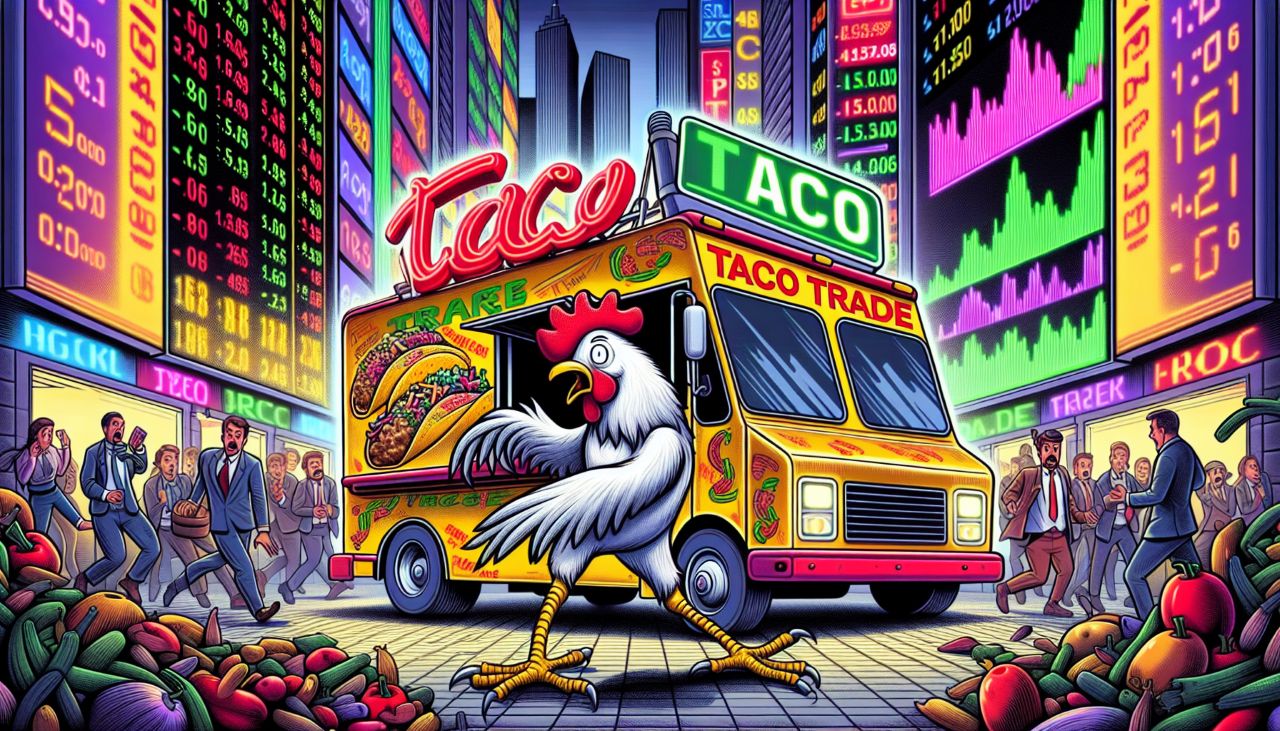
The Meme That Ate the Market: How “TACO” Became Wall Street’s Favorite Trade
If you’d told me a year ago that the hottest meme on Wall Street in 2025 would be a taco, I’d have assumed you were talking about a new fast-casual IPO. Instead, here we are: “TACO” is the acronym on every trader’s lips, and it has nothing to do with lunch. It stands for “Trump Always Chickens Out,” and it’s become the shorthand for a trading strategy that’s as much about psychology as it is about policy.
The Birth of the TACO Trade
The TACO trade didn’t emerge from a think tank or a hedge fund’s research desk. It was born on social media, then turbocharged by a Financial Times columnist, Robert Armstrong, who noticed a pattern: President Trump would announce sweeping, market-rattling tariffs—only to backtrack, delay, or soften them after stocks took a nosedive. The cycle became so predictable that traders started buying the dip every time Trump threatened a trade war, betting he’d “chicken out” before any real damage was done. The meme was irresistible: a blend of market cynicism, political satire, and the kind of gallows humor that only Wall Street can muster.
I first saw the term “TACO” pop up on X (formerly Twitter) in early May, attached to a GIF of a chicken in a MAGA hat running away from a taco truck. It was funny, sure, but it was also a pretty accurate market signal. By the end of the month, #TACOTrump was trending, and even the president himself was being asked about it at press conferences—much to his visible irritation. “That’s a nasty question,” he snapped at CNBC’s Megan Casella, after she asked if he really did always chicken out on tariffs. The internet, predictably, had a field day with that one.
Anatomy of a Meme Trade
Let’s break down how the TACO trade works. The playbook is simple: Trump threatens tariffs—say, a 50% levy on European goods, or a 145% tariff on Chinese imports. Markets panic, stocks drop, and the financial press goes into overdrive. Then, a few days (or sometimes hours) later, Trump announces a delay, a reduction, or a “pause for negotiations.” The market rebounds, and those who bought the dip cash in.
This isn’t just theory. On April 2, Trump’s “Liberation Day” tariffs sent the S&P 500 down 12%. A week later, he paused the tariffs for 90 days, and the market had its best day in nearly two decades. In late May, he threatened a 50% EU tariff, only to push the deadline to July 9 after stocks wobbled—cue a 2% rally.
The meme has become so entrenched that even retail investors are piling in, using social media to coordinate their “TACO” trades. TikTok is awash with videos of AI-generated Trumps eating tacos or morphing into chickens, while Instagram is full of acrostics and memes riffing on the theme. One viral post showed a taco with Trump’s face superimposed, captioned “Buy the Dip, Eat the TACO”.
Why the Meme Resonates
There’s a deeper logic to the TACO trade than just internet snark. In Trump’s first term, the so-called “Trump trade” was about betting on deregulation and tax cuts. This time, it’s about betting on volatility—and, crucially, on Trump’s sensitivity to the stock market. As Eric Sterner, CIO at Apollon, put it, “I think the only person or entity he listens to is the stock market. That’s a big part of his scorecard”.
Investors have learned to read the president’s moves as negotiation tactics rather than policy commitments. When Trump threatened 145% tariffs on China in April, markets tanked. When he cut them to 30% a month later, stocks soared. The pattern is so reliable that it’s become a self-fulfilling prophecy: the more people believe in the TACO trade, the more they act on it, and the more it works.
The Risks Beneath the Salsa
Of course, no meme lasts forever. The TACO trade is built on the assumption that Trump will always back down before real economic pain sets in. But what if he doesn’t? What if, this time, the tariffs stick? Some analysts warn that if negotiations with the EU or China break down, and the delays expire without a deal, the market could face a much steeper correction. “If this game continues, it will put the US economy into recession at some point, and that’s when that game ends in a bad way,” Sterner cautioned.
There’s also the risk that the meme itself becomes a distraction. As one veteran trader told me, “It’s all fun and games until someone gets caught holding the bag. Memes don’t pay the bills if the market really tanks.”
A First-Person Glimpse: Trading the TACO
I’ll admit, I tried the TACO trade myself—just a small position, for research, I told myself. When Trump announced the EU tariffs, I bought a handful of S&P 500 calls. Two days later, he delayed the tariffs, and the market bounced. I made enough for a nice dinner (tacos, naturally). But as I watched the memes fly and the market whipsaw, I couldn’t help but wonder: how long can this cycle last? Is this the new normal, or just another chapter in Wall Street’s long history of chasing the next big thing?
The Meme That Won’t Quit
For now, the TACO trade is the story of the summer. It’s a meme, a market strategy, and a political commentary all rolled into one. It’s also a reminder that, in 2025, the line between finance and internet culture is blurrier than ever. Whether you’re a seasoned trader or just a meme enthusiast, one thing’s clear: on Wall Street, everyone’s hungry for the next TACO.
